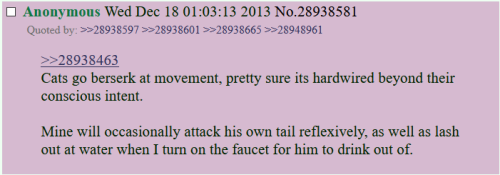I Was Meeting A Client At A Famous Museum’s Lounge For Lunch (fancy, I Know) And Had An Hour To Kill
I was meeting a client at a famous museum’s lounge for lunch (fancy, I know) and had an hour to kill afterwards so I joined the first random docent tour I could find. The woman who took us around was a great-grandmother from the Bronx “back when that was nothing to brag about” and she was doing a talk on alternative mediums within art.
What I thought that meant: telling us about unique sculpture materials and paint mixtures.
What that actually meant: an 84yo woman gingerly holding a beautifully beaded and embroidered dress (apparently from Ukraine and at least 200 years old) and, with tears in her eyes, showing how each individual thread was spun by hand and weaved into place on a cottage floor loom, with bright blue silk embroidery thread and hand-blown beads intricately piercing the work of other labor for days upon days, as the labor of a dozen talented people came together to make something so beautiful for a village girl’s wedding day.
What it also meant: in 1948, a young girl lived in a cramped tenement-like third floor apartment in Manhattan, with a father who had just joined them after not having been allowed to escape through Poland with his pregnant wife nine years earlier. She sits in her father’s lap and watches with wide, quiet eyes as her mother’s deft hands fly across fabric with bright blue silk thread (echoing hands from over a century years earlier). Thread that her mother had salvaged from white embroidery scraps at the tailor’s shop where she worked and spent the last few days carefully dying in the kitchen sink and drying on the roof.
The dress is in the traditional Hungarian fashion and is folded across her mother’s lap: her mother doesn’t had a pattern, but she doesn’t need one to make her daughter’s dress for the fifth grade dance. The dress would end up differing significantly from the pure white, petticoated first communion dresses worn by her daughter’s majority-Catholic classmates, but the young girl would love it all the more for its uniqueness and bright blue thread.
And now, that same young girl (and maybe also the villager from 19th century Ukraine) stands in front of us, trying not to clutch the old fabric too hard as her voice shakes with the emotion of all the love and humanity that is poured into the labor of art. The village girl and the girl in the Bronx were very different people: different centuries, different religions, different ages, and different continents. But the love in the stitches and beads on their dresses was the same. And she tells us that when we look at the labor of art, we don’t just see the work to create that piece - we see the labor of our own creations and the creations of others for us, and the value in something so seemingly frivolous.
But, maybe more importantly, she says that we only admire this piece in a museum because it happened to survive the love of the wearer and those who owned it afterwards, but there have been quite literally billions of small, quiet works of art in billions of small, quiet homes all over the world, for millennia. That your grandmother’s quilt is used as a picnic blanket just as Van Gogh’s works hung in his poor friends’ hallways. That your father’s hand-painted model plane sets are displayed in your parents’ livingroom as Grecian vases are displayed in museums. That your older sister’s engineering drawings in a steady, fine-lined hand are akin to Da Vinci’s scribbles of flying machines.
I don’t think there’s any dramatic conclusions to be drawn from these thoughts - they’ve been echoed by thousands of other people across the centuries. However, if you ever feel bad for spending all of your time sewing, knitting, drawing, building lego sets, or whatever else - especially if you feel like you have to somehow monetize or show off your work online to justify your labor - please know that there’s an 84yo museum docent in the Bronx who would cry simply at the thought of you spending so much effort to quietly create something that’s beautiful to you.
More Posts from Roebert and Others



Dress made of cotton
1870-1880
Grand Rapids Public Museum

Yueqi Qi Fall 2025 Ready-To-Wear

Dress
c. 1807-1810
DAR Museum


Wedding Dress
c. 1900
by W.T. Waters & Co.
Museum of New Zealand, Te Papa





Dress
c. 1880-1890
Grand Rapids Public Museum
@snake-spotted
“The snakes are very cute and the blog is super positive.”
“if you like seeing adorable little snakes on your dash, then this is the blog 4u!!”
@mtg-cards-hourly
“Inspired several commander decks”
do you know much about creating and maintaining an artificial biotope? More specifically, how does bacteria help in maintaining these ecosystems in the long term?
Hello, thank you for the marvellous question! Biotope is a very broad term but generally refers to an area where environmental conditions are the same/quite consistent, or a small ecosystem. Fish tanks are a good example of this.
I have not tried to create one and unfortunately cannot provide much information from my research, but it’s worth thinking about what bacteria normally do in ecosystems. Breaking down organic matter, nitrogen fixing, chilling out and getting me sick…they may also have symbiotic relationships with other organisms, like how humans have microbes that support our immune and digestive systems (I’m NOT explaining the complexities of the microbiome here, this is a huge simplification).
How you do it will also affect what you need to do — is it a butterfly garden interacting with the great outdoors? Is it an aquarium? Is it one of those sealed terrariums? (very cool, I want one). All these will have different things to consider.
Sorry I can’t be of more help! I hope you’re able to find some answers soon — and please let me know if you do! I’m also very interested in bacteria ecology.
-
 morethanthedark reblogged this · 3 days ago
morethanthedark reblogged this · 3 days ago -
 morethanthedark liked this · 3 days ago
morethanthedark liked this · 3 days ago -
 dorkofyork reblogged this · 3 days ago
dorkofyork reblogged this · 3 days ago -
 concernedlily liked this · 3 days ago
concernedlily liked this · 3 days ago -
 eidetictelekinetic reblogged this · 3 days ago
eidetictelekinetic reblogged this · 3 days ago -
 breathe-2am liked this · 3 days ago
breathe-2am liked this · 3 days ago -
 musainrules reblogged this · 3 days ago
musainrules reblogged this · 3 days ago -
 theotherdibbler-blog reblogged this · 3 days ago
theotherdibbler-blog reblogged this · 3 days ago -
 theotherdibbler-blog liked this · 3 days ago
theotherdibbler-blog liked this · 3 days ago -
 starstainedwings liked this · 3 days ago
starstainedwings liked this · 3 days ago -
 strangegeology liked this · 3 days ago
strangegeology liked this · 3 days ago -
 magicalgirlcrazycatlady reblogged this · 3 days ago
magicalgirlcrazycatlady reblogged this · 3 days ago -
 captain-megane reblogged this · 3 days ago
captain-megane reblogged this · 3 days ago -
 andwolvesarewildthings liked this · 3 days ago
andwolvesarewildthings liked this · 3 days ago -
 the-beginning-of-somewhere liked this · 3 days ago
the-beginning-of-somewhere liked this · 3 days ago -
 imabiscuitinthousandworlds reblogged this · 3 days ago
imabiscuitinthousandworlds reblogged this · 3 days ago -
 imabiscuitinthousandworlds liked this · 3 days ago
imabiscuitinthousandworlds liked this · 3 days ago -
 inaddendum liked this · 3 days ago
inaddendum liked this · 3 days ago -
 buffoonracoon liked this · 3 days ago
buffoonracoon liked this · 3 days ago -
 turtlewobbles reblogged this · 3 days ago
turtlewobbles reblogged this · 3 days ago -
 turtlewobbles liked this · 3 days ago
turtlewobbles liked this · 3 days ago -
 cicerfics reblogged this · 3 days ago
cicerfics reblogged this · 3 days ago -
 knownasbelen liked this · 3 days ago
knownasbelen liked this · 3 days ago -
 c1r-cus liked this · 3 days ago
c1r-cus liked this · 3 days ago -
 bexterbaileyw liked this · 3 days ago
bexterbaileyw liked this · 3 days ago -
 tina-town reblogged this · 3 days ago
tina-town reblogged this · 3 days ago -
 deathdefyinglifeleaps liked this · 3 days ago
deathdefyinglifeleaps liked this · 3 days ago -
 stelly38 reblogged this · 3 days ago
stelly38 reblogged this · 3 days ago -
 stelly38 liked this · 3 days ago
stelly38 liked this · 3 days ago -
 ninjasunderstoodmyagenda liked this · 3 days ago
ninjasunderstoodmyagenda liked this · 3 days ago -
 asphodel-e liked this · 3 days ago
asphodel-e liked this · 3 days ago -
 norwich36 reblogged this · 3 days ago
norwich36 reblogged this · 3 days ago -
 sig66 liked this · 3 days ago
sig66 liked this · 3 days ago -
 sig66 reblogged this · 3 days ago
sig66 reblogged this · 3 days ago -
 concupiscence66 liked this · 3 days ago
concupiscence66 liked this · 3 days ago -
 saritasoyyo liked this · 3 days ago
saritasoyyo liked this · 3 days ago -
 letsstartafamilywellinvitewelove reblogged this · 3 days ago
letsstartafamilywellinvitewelove reblogged this · 3 days ago -
 small-yandere-child reblogged this · 3 days ago
small-yandere-child reblogged this · 3 days ago -
 anxiety-max-level reblogged this · 3 days ago
anxiety-max-level reblogged this · 3 days ago -
 morticia-butler reblogged this · 3 days ago
morticia-butler reblogged this · 3 days ago -
 morticia-butler liked this · 3 days ago
morticia-butler liked this · 3 days ago -
 miri-tiazan reblogged this · 3 days ago
miri-tiazan reblogged this · 3 days ago -
 miri-tiazan liked this · 3 days ago
miri-tiazan liked this · 3 days ago -
 ozmaba reblogged this · 3 days ago
ozmaba reblogged this · 3 days ago -
 ozmaba liked this · 3 days ago
ozmaba liked this · 3 days ago -
 cicerfics liked this · 3 days ago
cicerfics liked this · 3 days ago -
 cacophonous-noise liked this · 3 days ago
cacophonous-noise liked this · 3 days ago -
 scarlettgauthor reblogged this · 3 days ago
scarlettgauthor reblogged this · 3 days ago -
 scarlettohairdye liked this · 3 days ago
scarlettohairdye liked this · 3 days ago



